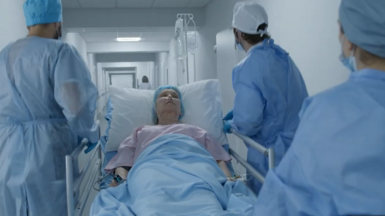Anopheles sacharovi
Species name/classification: Anopheles (Anopheles) sacharovi Favre, 1903
Common name/synonyms: Member of the Anopheles maculipennis complex
Summary
- Distribution limited to south-eastern Europe.
- Formerly more widespread in Italy, but declined following large-scale efforts to remove aquatic habitats of malaria vectors.
- Historically, an important vector of malaria across Europe, and remains principal vector in Turkey.
- Involved in recent outbreaks of vivax malaria in Greece.
- Highly anthropophilic, endo- and exophagic.
- Exploits coastal brackish habitats, river margins, swamps and irrigated land for rice.
- Previous attempts to control this species through environmental management and insecticide treatment have been successful in Italy.
Geographical distribution
Current spread:
Anopheles sacharovi was reportedly distributed from coastal parts of Italy, Sardinia, Corsica, Croatia, the former Yugoslav Republic of Macedonia, Albania, Bulgaria, Romania to southern regions of the former USSR, and from Turkey to Lebanon, Israel, Jordan, Syria, Iraq, Iran [1-4]. Preliminary results from recent research in Moldova suggest that a large population of this species is present in the south of the country (Sulesco, personal communication 2012). It was first reported in Greece in 1928 and later found breeding in high densities in all coastal areas [5]. This species was previously present in Armenia in high numbers but disappeared in 1965. Recent studies suggest re-colonisation of some areas of Armenia [6]. There are also records from 2009 in Cyprus [7].
Anopheles sacharovi is no longer present in Italy; the last records were during the 1960s and 70s. The species was present in continental Italy, particularly along the north western coastal plain (delta of the Po river, where it acted as a malaria vector in the absence of An. labranchiae, previously the main malaria vector) and in northern Sardinia, where it probably played a secondary role in transmission. Aquatic habitats showed a preference for retro-coastal brackish swamps, but today it has almost disappeared from these habitats. It has never been recorded in Sicily. The decline in this species is attributed to the great land reclamation that occurred in Italy to remove habitats for malaria vectors (Romi, personal communication) [8-13].
A doubtful record has been reported from Austria [2]. Anopheles sacharovi may be present in Hungary but this needs confirmation [14]. The species has been reported on some occasions from Corsica until the 1950s, but its presence was not detected during recent field surveys [15]. It is absent from mainland France, Spain, and the North African coast. Expected future climate change may modify the distribution of this species [16].
Entomology
- Species name/classification: Anopheles (Anopheles) sacharovi Favre, 1903
- Common name/synonyms: Member of the Anopheles maculipennis complex
Morphological characteristics/similar species:
Adults of An. sacharovi are difficult to distinguish from other sibling species of the Anopheles maculipennis complex but can be identified if in a good condition, based on the lighter colouration of the mesonotum, the lack of a pale median stripe on the scutum, the almost unnoticeable patches of dark scales on the wing veins and the absence of a patch of clear scales on the wing fringe [1,2]. Eggs of An. sacharovi lack enlarged floats (although some may develop in colder regions) and egg surface is uniformly pale compared to the other complex member species [1]. It is recommended to confirm its identification based on molecular tools (e.g. analysing ITS2 rDNA sequence using PCR-RFLP) [17,18].
Life history (diapausing tendencies, seasonal abundance, flight range, and voltinism):
Adult activity generally peaks during July and August. In Albania, peaks are generally seen in July (June in coastal areas), with numbers declining in August and September [19]. Hibernation takes place in the adult female stage, and these can often be found overwintering in stables or other animal shelters [1]. In warmer areas, hibernation is incomplete and activity is simply interrupted during colder periods [20]. Imagoes can fly as far away as 3–5 km, and exceptionally up to 14 km [2].
Host preferences:
Anopheles sacharovi is often described as being highly anthropophilic [3,21] (Romi, personal communication) but will also feed on a wide range of hosts including sheep, goats, cattle, horses, birds, rabbits, rodents, and domestic pets [22]. A study in Greece based on blood meals of over 1000 An. sacharovi collected in the 1970s showed a preference for sheep, goats, pigs and humans (also some mixed blood meals). It has also been suggested that host selection patterns were affected during an eradication programme which may have resulted in zoophilic behaviour, as opposed to anthropophilic feeding [22]. Anopheles sacharovi is reportedly exophagic, endophagic and endophilic (Romi, personal communication).
Aquatic/terrestrial habitat:
Anopheles sacharovi larvae prefer sunlit areas with floating-emergent vegetation and are typically found in swamps/marshes, lagoons, river margins, streams and springs, pools and roadside ditches [1]. They can also be found in rice fields and other irrigated areas [6]. Larvae of An. sacharovi have been collected from canals, marshes and numerous coastal areas in Greece [5] and will develop in both fresh and brackish habitats (up to 20% salinity) [20]. Although primarily associated with stagnant water, An. sacharovi larvae will also tolerate slow flowing water such as streams [19,23].
Resting habitat:
Adults of An. sacharovi are known to rest in human dwellings, including flooded basements (in Greece) [5] and animal sheds [21]. Recent field work in Albania found an adult An. sacharovi in a pig pen during June 2011 (E. Dikolli, personal communication, 2012).They can also be found resting outdoors in hollow trees and rock cavities [1]. Resting behaviour may be modified in response to eradication programmes, resulting in adults resting in areas away from domesticated habitats, but this is suggested to revert to usual resting habits once control efforts stop [22]. Purpose-built huts were used in Italy to trap overwintering females (Romi, personal communication).
Biting behaviour:
An. sacharovi is known to bite humans indoors and outside [21]. They can be persistent biters in sheltered areas during the daytime [1,20], but the majority feed in the evening [23].
Environmental thresholds/constraints:
Larvae of An. sacharovi are not tolerant to organic pollutants [20]. Studies in Turkey provide evidence of local climate adaptation of adults of this species at different altitudes and suggest that An. sacharovi has developed a number of reproductive strategies which are dependent upon local climate [3,24].
Epidemiology and transmission of pathogens
Known vector status:
Anopheles sacharovi is an important vector of malaria throughout its distribution [1]. Historically it is a known vector of malaria in Armenia [6] and a proven vector in Turkey, Syria, northern Iraq and Iran [3] but also Greece [5]. It remains the most important vector of malaria in Turkey [25]. Anopheles sacharovi has been suggested to have been involved in malaria transmission in Corsica, France, the Balkans, Italy, Romania and Greece [16]. It was the main vector in north-eastern coastal Italy (Romi, personal communication). Anopheles sacharovi was responsible for malaria transmission in Greece in 2011, resulting in 42 autochthonous cases of Plasmodium vivax infection [26-28]. In addition, 17 autochthonous cases were reported in Greece between 1990 and 2010 [29]. These are assumed to be due to the onward transmission of malaria from migrants from malaria-endemic countries through An. sacharovi, which is the most abundant and competent malaria vector in Greece [26,29,30].
It is not clear if the presence of formerly vector-competent* European Anopheles species can be correlated with a certain risk of present malaria transmission after infection of the mosquitoes, even if the climatic conditions are beneficial to parasite development in mosquitoes [16].
Surveillance
Activities in Europe:
Various countries have set up nationwide surveillance schemes to establish baseline distributions of species, detect changes in distribution but also introductions of new species, and in some countries (e.g. Italy) this has been targeted to inform national risk assessments for malaria. This information is currently shared with VBORNET partners and collaborators via the network.
Sampling strategies:
Handheld aspirators used in houses and animal barns as well as animal baited traps have been shown to be successful in the collection of adult An. sacharovi. Also, CDC miniature light traps are used [3]. CO2-baited CDC light traps can also be used to collect adult mosquitoes [26]. Larval dipping can be used to sample immature stages from aquatic breeding places.
Control
Species-specific control methods:
Anopheles sacharovi are sometimes difficult to control, with resistance to DDT and dieldrin being demonstrated in Greece [21]. In Turkey, An. sacharovi have been found to be resistant to DDT and dieldrin but susceptible to malathion, fenitrothion, propoxur, bendiocarbs, lambdacyhalotrhin, permetrhin, cyfluthrin, etofenprox and deltamethrin [23], whereas an earlier study found that, in some regions, it was resistant to multiple insecticides [31]. Aerial application of water-based pyrethroids to agricultural land in Greece produced a 61–89% reduction in mosquito populations [32]. However, this method is not currently permitted in the majority of EU countries.. Wide scale environmental management and national interruption of rice cultivation was implemented with the use of IRS in Armenia to successfully control malaria in the 1950s and 60s [6]. Environmental control such as drainage, filling, environmental modification and planting of eucalyptus trees for drying land with a high water tables are also used [23]. Larvae are difficult to control due to numerous aquatic habitats [25].
The large-scale reduction of malaria vectors in Italy in the 1920s and 30s involved a variety of strategies, including land reclamation (digging drainage channels to drain swamps), larviciding (including aerial treatments), and huts to trap overwintering females. Personal protective measures to reduce the risk of mosquito bites include the use of mosquito bed nets (preferably insecticide-treated nets), sleeping or resting in screened or air-conditioned rooms, the wearing of clothes that cover most of the body, and the use of mosquito repellent in accordance with the instructions indicated on the product label.
Footnote
*Vector competence is the physiological ability of a mosquito to become infected with and transmit a pathogen, and is typically assessed in laboratory studies. In nature, transmission of a pathogen by vectors is dependent not only on vector competence but also on factors describing the intensity of interaction between the vector, the pathogen and the host in the local environment. Therefore, vector and host densities, geographic distribution, longevity, dispersal and feeding preferences have to be considered to determine the vectorial capacity of a vector population and its role in transmission.
References
1. Becker N, Petric D, Zgomba M, Boase C, Madon M, Dahl C, et al. Mosquitoes and their control. Second Edition ed. Berlin: Springer Verlag. ; 2010.
2. Schaffner F, Angel G, Geoffroy B, Hervy JP, Rhaiem A, J. B. The mosquitoes of Europe (CD ROM). Montpellier, France: IRD Edition and EID Méditerranée; 2001.
3. Yurttas H, Alten B. Geographic differentiation of life table attributes among Anopheles sacharovi (Diptera: Culicidae) populations in Turkey. J Vector Ecol. 2006 Dec;31(2):275-84.
4. Merdic E. Checklist of mosquitoes (Diptera: Culicidae) of Croatia. European Mosquito Bulletin. 2004;17:8-13.
5. Patsoula E, Samanidou-Voyadjoglou A, Spanakos G, Kremastinou J, Nasioulas G, Vakalis NC. Molecular characterization of the Anopheles maculipennis complex during surveillance for the 2004 Olympic Games in Athens. Med Vet Entomol. 2007 Mar;21(1):36-43.
6. Romi R, Boccolini D, Hovanesyan I, Grigoryan G, Di Luca M, Sabatinell G. Anopheles sacharovi (Diptera: Culicidae): a reemerging malaria vector in the Ararat Valley of Armenia. J Med Entomol. 2002 May;39(3):446-50.
7. Violaris M, Vasquez MI, Samanidou A, Wirth MC, Hadjivassilis A. The mosquito fauna of the Republic of Cyprus: a revised list. J Am Mosq Control Assoc. 2009 Jun;25(2):199-202.
8. Bietolini S, Candura F, Coluzzi M. Spatial and long term temporal distribution of the Anopheles maculipennis complex species in Italy. Parassitologia. 2006 Dec;48(4):581-608.
9. Di Luca M, Boccolini D, Severini F, Toma L, Barbieri FM, Massa A, et al. A 2-year entomological study of potential malaria vectors in central Italy. Vector Borne Zoonotic Dis. 2009 Dec;9(6):703-11.
10. Romi R, Boccolini D, D'Amato S, Cenci C, Peragallo M, D'Ancona F, et al. Incidence of malaria and risk factors in Italian travelers to malaria endemic countries. Travel Med Infect Dis. 2010 May;8(3):144-54.
11. Romi R, Pierdominici G, Severini C, Tamburro A, Cocchi M, Menichetti D, et al. Status of malaria vectors in Italy. J Med Entomol. 1997 May;34(3):263-71.
12. Romi R, Sabatinelli G, Majori G. Could malaria reappear in Italy? Emerg Infect Dis. 2001 Nov-Dec;7(6):915-9.
13. Romi R, Severini C, Cocchi M, Tamburro A, Menichetti D, Pierdominici G, et al. [Anopheles in Italy: distribution on rice lands in the provinces of Grosseto and Siena]. Ann Ist Super Sanita. 1992;28(4):527-31.
14. Tóth S, Kenyeres Z. Revised checklist and distribution maps of mosquitoes (Diptera, Culicidae) of Hungary. European Mosquito Bulletin. 2010;30:30-5.
15. Toty C, Barre H, Le Goff G, Larget-Thiery I, Rahola N, Couret D, et al. Malaria risk in Corsica, former hot spot of malaria in France. Malar J. 2010;9:231.
16. Alten B, Kempen H, Fontenille D. Malaria in Southern Europe: resurgence from the past? In: Takken W, Knols BGJ, editors. Emerging Pests and Vector-Borne Diseases in Europe 1. Wageningen: Wageningen University Press; 2007. p. 35-57.
17. Sedaghat MM, Linton YM, Nicolescu G, Smith L, Koliopoulos G, Zounos AK, et al. Morphological and molecular characterization of Anopheles (Anopheles) sacharovi Favre, a primary vector of malaria in the Middle East. Syst Entomol. 2003 Apr;28(2):241-56.
18. Talbalachi A, Shaikevich E. Molecular approach for identification of mosquito species (Diptera: Culicidae in Province of Alessandria, Piedmont, Italy. European Journal of Entomology. 2011;108(1):35-40.
19. Bates M. The seasonal distribution of Anopheline mosquitoes in the vicinity of Tirana, Albania. Rivista di Malariologia. 1937;16:253-64.
20. Sinka ME, Bangs MJ, Manguin S, Coetzee M, Mbogo CM, Hemingway J, et al. The dominant Anopheles vectors of human malaria in Africa, Europe and the Middle East: occurrence data, distribution maps and bionomic precis. Parasit Vectors. 2010;3:117.
21. Hadjinicolaou J, Betzios B. Resurgence of Anopheles sacharovi following malaria eradication. Bull World Health Organ. 1973 Jun;48(6):699-703.
22. Boreham PF, Garrett-Jones C. Prevalence of mixed blood meals and double feeding in a malaria vector (Anopheles sacharovi Favre). Bull World Health Organ. 1973 May;48(5):605-14.
23. Ozbilgina A, Topluoglu S, Es S, Islek E, Mollahaliloglu S, Erkoc Y. Malaria in Turkey: successful control and strategies for achieving elimination. Acta Trop. 2011 Oct-Nov;120(1-2):15-23.
24. Yurttas H, Alten B, Aytekin AM. Variability in natural populations of Anopheles sacharovi (Diptera: Culicidae) from southeast Anatolia, revealed by morphometric and allozymic analyses. J Vector Ecol. 2005 Dec;30(2):206-12.
25. Alten B, Caglar SS, Simsek FM, Kaynas S. Effect of insecticide-treated bednets for malaria control in Southeast Anatolia – Turkey. J Vector Ecol. 2003 Jun;28(1):97-107.
26. Danis K, Baka A, Lenglet A, Van Bortel W, Terzaki I, Tseroni M, et al. Autochthonous Plasmodium vivax malaria in Greece, 2011. Eurosurveillance. 2011;16(42):19993.
27. European Centre for Disease Prevention and Control. Meeting Report: Consultation on Plasmodium vivax transmission risk in Europe, Stockholm 17–18 January 2012. Stockholm: ECDC, 2012.
28. Hellenic Center for Disease Prevention and Control. Epidemiological Surveillance Report, Malaria in Greece, up to 16/11/2013, 2013 [13/01/2014]. Athens; 2013.
29. Vakali A, Patsoula E, Spanakos G, Danis K, Vassalou E, Tegos N, et al. Malaria in Greece, 1975 to 2010. Eurosurv. 2012;17(47):20322.
30. Kousoulis AA, Chatzigeorgiou KS, Danis K, Tsoucalas G, Vakalis N, Bonovas S, et al. Malaria in Laconia, Greece, then and now: a 2500-year-old pattern. Int J Infect Dis. 2013 Jan;17(1):e8-e11.
31. Kasap H, Kasap M, Alptekin D, Luleyap U, Herath PR. Insecticide resistance in Anopheles sacharovi Favre in southern Turkey. Bull World Health Organ. 2000;78(5):687-92.
32. Chaskopoulou A, Latham MD, Pereira RM, Connelly R, Bonds JA, Koehler PG. Efficacy of aerial ultra-low volume applications of two novel water-based formulations of unsynergized pyrethroids against riceland mosquitoes in Greece. J Am Mosq Control Assoc. 2011 Dec;27(4):414-22.




